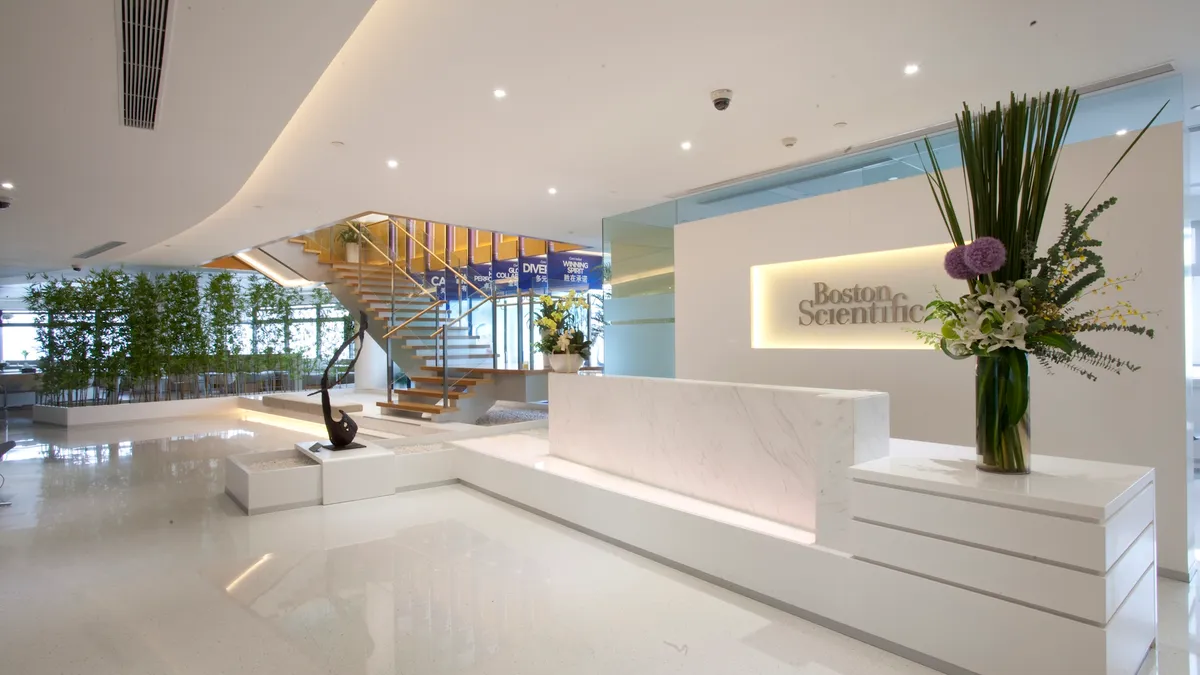Dive Brief:
- Boston Scientific posted first-quarter sales that beat its forecasts and raised 2022 guidance as the company expects a less volatile year than 2021.
- The company reported sales of $3 billion in the quarter, 10% higher than the year-earlier period on a reported basis. The growth exceeded Boston Scientific’s forecasted range of 5% to 8%. CEO Michael Mahoney said during a Wednesday earnings call that after procedure volumes fell in January and early February due to the omicron surge, volumes grew “significantly” as the quarter unfolded.
- For the full year, the company expects a more consistent environment than last year, according to Mahoney. “We do expect a significant less COVID impact in [2022] versus [2021,]” Mahoney said. “These things are tough to predict, but outside of pockets in Asia, the rest of the world appears to be pretty strong right now.” Still, Mahoney said that the medtech expects China’s COVID-19 surge and lockdowns will impact procedure volumes next quarter.
Dive Insight
Boston Scientific is the latest company to report improving procedure trends after the omicron surge at the beginning of the year, following reports from Johnson & Johnson and Intuitive Surgical. Wall Street analysts have written that early medtech reports suggest a stronger recovery in the second half of the year.
After the better-than-forecast sales in the first quarter, Boston Scientific raised its sales guidance for the full year to a range of 7% to 9% on a reported basis, compared with a range of 6% to 8% given in February.
Organic sales of Boston Scientific’s Watchman device rose 33% in the quarter and the company estimates that the product will grow by double digits for the full year. The medtech's left atrial appendage closure device continues to produce sales growth even with the emergence of Abbott Laboratories’ rival Amulet product last year.
“The primary growth driver of this business continues to be the U.S. — in a significant way. There's some small growth in Japan, some small growth in Europe and in China, but the big lever here is the U.S.,” Mahoney told investors on Wednesday.
While the company expects a more stable 2022 in regards to procedure volumes, there are still hurdles ahead such as the ongoing hospital labor shortages and COVID-19 outbreaks in China that have led to lockdowns.
Mahoney said that pressure will come from lockdowns limiting procedures and also challenges with shipping and other operational activities in China’s supply chain.
The CEO declined to comment specifically on how much the business has been impacted when questioned by an analyst.
Despite the challenges, Mahoney said the drop is baked into the company's forecast, and the CEO is confident that the “China team will deliver strong double-digit growth for [the] full year.”
The commentary is consistent with other medtechs that have reported so far. Ashley McEvoy, J&J’s worldwide chairman of medtech, told investors last week that a slowdown in China is expected to continue through April and May, while adding that “China might come down a bit faster but it comes back faster too.”
Another question facing medtechs amid their pandemic recovery is recapturing backlogs from deferred or canceled procedures. Mahoney said that hospitals have been busy but discerning which procedures are part of a backlog or not is complex.
“The whole backlog question’s a really difficult one to quantify ‘cause our physicians are super busy. Many times there's wait time to get in, to get these procedures anyway. So, we're very comfortable, I would say, with the demand,” Mahoney said. “It's always difficult to say has backlog been captured or not. These hospitals are busy … We don't expect really any spikes or troughs in that area."












